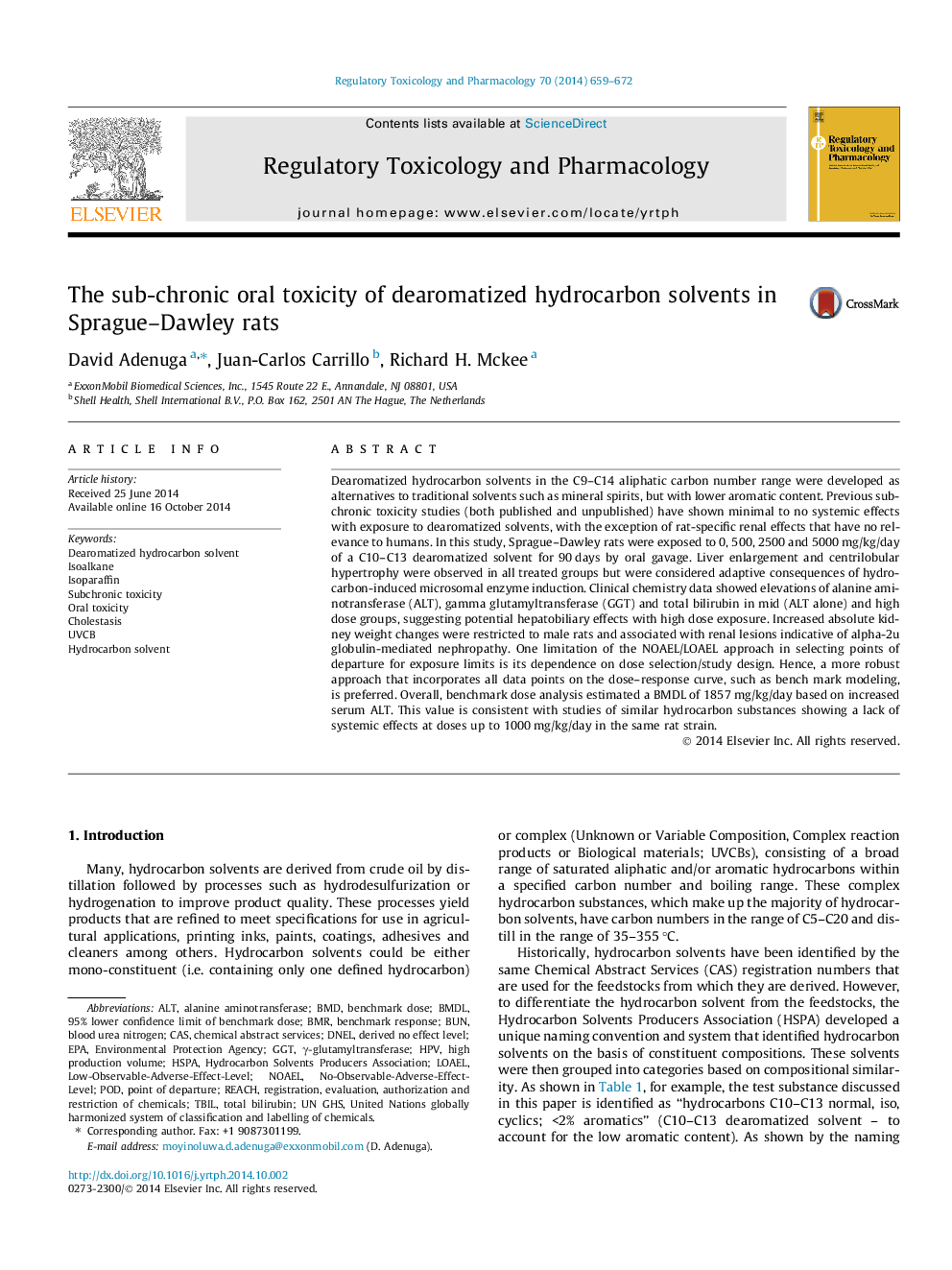| کد مقاله | کد نشریه | سال انتشار | مقاله انگلیسی | نسخه تمام متن |
|---|---|---|---|---|
| 5856449 | 1562130 | 2014 | 14 صفحه PDF | دانلود رایگان |

- Oral exposure to dearomatized solvents caused liver and kidney changes in rats.
- Renal effects were consistent with male-rat specific alpha-2u globulin nephropathy.
- Liver changes were consistent with an acute, reversible intrahepatic cholestasis.
- Benchmark dose for liver enzyme effects was 1857Â mg/kg.
Dearomatized hydrocarbon solvents in the C9-C14 aliphatic carbon number range were developed as alternatives to traditional solvents such as mineral spirits, but with lower aromatic content. Previous subchronic toxicity studies (both published and unpublished) have shown minimal to no systemic effects with exposure to dearomatized solvents, with the exception of rat-specific renal effects that have no relevance to humans. In this study, Sprague-Dawley rats were exposed to 0, 500, 2500 and 5000Â mg/kg/day of a C10-C13 dearomatized solvent for 90Â days by oral gavage. Liver enlargement and centrilobular hypertrophy were observed in all treated groups but were considered adaptive consequences of hydrocarbon-induced microsomal enzyme induction. Clinical chemistry data showed elevations of alanine aminotransferase (ALT), gamma glutamyltransferase (GGT) and total bilirubin in mid (ALT alone) and high dose groups, suggesting potential hepatobiliary effects with high dose exposure. Increased absolute kidney weight changes were restricted to male rats and associated with renal lesions indicative of alpha-2u globulin-mediated nephropathy. One limitation of the NOAEL/LOAEL approach in selecting points of departure for exposure limits is its dependence on dose selection/study design. Hence, a more robust approach that incorporates all data points on the dose-response curve, such as bench mark modeling, is preferred. Overall, benchmark dose analysis estimated a BMDL of 1857Â mg/kg/day based on increased serum ALT. This value is consistent with studies of similar hydrocarbon substances showing a lack of systemic effects at doses up to 1000Â mg/kg/day in the same rat strain.
Journal: Regulatory Toxicology and Pharmacology - Volume 70, Issue 3, December 2014, Pages 659-672